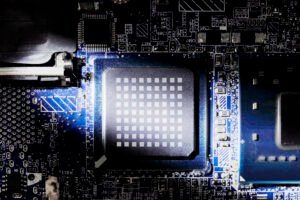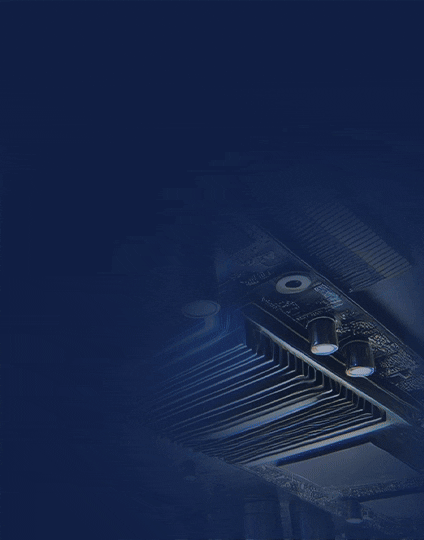Data centers play a pivotal role in today’s digital landscape, powering a wide range of critical applications and services. However, with the ever-increasing demands for computational power and data processing, traditional processors alone struggle to keep up. This is where Field-Programmable Gate Arrays (FPGAs) come into play, offering a powerful and flexible solution for data center acceleration.
In this blog post, we will delve into the world of FPGAs and explore their significant impact on data center performance. We will discuss the architecture, advantages, and diverse applications of FPGAs in various industries. Furthermore, we will examine the pressing need for data center acceleration and how FPGAs can address the challenges faced by these facilities.
The Need for Data Center Acceleration
In today’s digital age, data centers play a crucial role in supporting the massive amounts of data generated by businesses, organizations, and individuals. However, as data volumes continue to grow exponentially, traditional computing infrastructure faces significant challenges in meeting the demands for faster processing and analysis. This is where data center acceleration becomes essential.
Growing Demands for Computational Power and Data Processing:
As technology advances and businesses increasingly rely on data-driven decision-making, the need for computational power and data processing capabilities has skyrocketed. Applications such as artificial intelligence (AI), machine learning (ML), big data analytics, and high-performance computing require immense processing power, which standard CPUs alone cannot efficiently provide.
Challenges Faced by Data Centers:
Data centers face several challenges in keeping up with the growing demands of data processing and analysis:
A. Performance Bottlenecks: Traditional central processing units (CPUs) have limitations in terms of performance and throughput, especially when dealing with complex algorithms and large datasets. This leads to bottlenecks, slowing down the overall data processing pipeline.
B. Energy Efficiency: As data centers consume massive amounts of electricity, energy efficiency is a critical concern. Standard CPUs are often power-hungry and inefficient, resulting in increased operational costs and environmental impact.
C. Scalability and Flexibility: Traditional computing architectures may struggle to scale efficiently to handle increasing workloads. This limitation hinders the data center’s ability to meet fluctuating demands and adapt to rapidly evolving technology requirements.
The Role of Accelerators in Addressing Data Center Challenges:
To overcome these challenges, data centers are turning to accelerators, specialized hardware components designed to offload specific computational tasks from the CPU. These accelerators are optimized for specific workloads, providing significantly improved performance, energy efficiency, and scalability compared to traditional CPUs.
A. FPGA-Based Acceleration:
One type of accelerator gaining traction in data centers is the Field-Programmable Gate Array (FPGA). FPGAs are highly flexible and customizable integrated circuits that can be programmed and reprogrammed to perform specific tasks with high efficiency. Their parallel processing capabilities and ability to implement custom logic make them ideal for accelerating diverse workloads.
B. GPU-Based Acceleration:
Graphics Processing Units (GPUs) are another popular accelerator choice. Originally designed for rendering graphics, GPUs excel at performing highly parallel computations. Their ability to process large amounts of data simultaneously has made them indispensable for tasks such as AI/ML training and rendering complex visualizations.
C. Application-Specific Integrated Circuits (ASICs):
ASICs are custom-designed chips specifically built for a particular application or workload. They offer exceptional performance and efficiency but lack the flexibility and programmability of FPGAs and GPUs. ASICs are commonly used for specialized tasks where the workload remains constant.
FPGA-Based Data Center Acceleration
In today’s rapidly evolving digital landscape, data centers face increasing demands for processing and analyzing vast amounts of data in real time. Traditional processors alone may struggle to meet these demands, leading to performance bottlenecks and inefficiencies. This is where FPGA-based data center acceleration comes into play, offering a powerful solution to enhance computational capabilities and optimize data center operations.
A. Introduction to FPGA-Based Acceleration
Field-programmable Gate Arrays (FPGAs) are highly flexible and reconfigurable integrated circuits that can be programmed to perform specific tasks with high efficiency. Unlike traditional processors, FPGAs can be customized at the hardware level to match the requirements of specific workloads, making them ideal for accelerating data center operations.
B. Advantages of FPGA-based acceleration
Performance Enhancement: FPGAs can provide significant performance gains by offloading compute-intensive tasks from CPUs and GPUs. They can execute parallel computations at high throughput, enabling faster data processing and analysis.
Energy Efficiency: FPGAs are known for their energy efficiency, as they can be designed to perform targeted computations with minimal power consumption. This makes them a compelling choice for data centers striving to reduce their carbon footprint and operating costs.
Customizability: With FPGAs, data center operators have the flexibility to create tailored hardware accelerators that address specific workload requirements. This customization can result in optimized performance and reduced latency.
Scalability: FPGAs can be easily scaled by adding more chips or modules, allowing data centers to expand their acceleration capabilities without overhauling their entire infrastructure.
Low Latency: FPGA-based acceleration can significantly reduce latency by bypassing the need for data transfers between the CPU and GPU. This is especially beneficial for real-time applications that require quick responses.
C. Real-World Examples of FPGA-Based Acceleration
Several prominent companies have recognized the benefits of FPGA-based acceleration and have integrated FPGAs into their data center environments.
Microsoft Azure: Microsoft has deployed FPGAs in their Azure data centers to accelerate various services, such as AI inference, data analytics, and networking.
Amazon Web Services (AWS): AWS offers FPGA instances called “F1 instances” that customers can leverage to accelerate their applications, including genomics research, financial modeling, and video processing.
Baidu: The Chinese internet giant utilizes FPGAs for deep learning acceleration in their data centers, enabling faster training and inference for AI applications.
FPGA-based acceleration has proven its value in a wide range of use cases, including machine learning, financial modeling, genomics, video transcoding, and more. As data center workloads continue to evolve, the demand for FPGA-based acceleration is expected to grow.
Key Considerations for Adopting FPGAs in Data Centers
FPGAs (Field-Programmable Gate Arrays) offer significant benefits for accelerating data center workloads, but their adoption requires careful consideration of various factors. In this section, we will explore the key considerations that organizations should keep in mind when adopting FPGAs in data centers.
A. Evaluating Workload Suitability for FPGA Acceleration
- Understanding workload characteristics: Assess the nature of the workloads that can benefit from FPGA acceleration. Determine if they are compute-intensive, data-intensive, or require low latency.
- Analyzing performance requirements: Evaluate whether FPGA-based acceleration can deliver the desired performance improvements compared to traditional CPUs or GPUs.
- Identifying FPGA-friendly algorithms: Determine if the workload’s algorithms can be effectively parallelized and implemented on an FPGA.
B. Cost and Energy Efficiency Considerations
- Cost analysis: Assess the overall cost implications of adopting FPGAs, including upfront expenses for FPGA hardware, development tools, and ongoing maintenance.
- Power consumption: Evaluate the power efficiency of FPGAs compared to alternative solutions. Consider factors like energy consumption, cooling requirements, and space utilization.
- Total cost of ownership (TCO): Calculate the long-term TCO by considering factors such as hardware depreciation, power consumption, and operational expenses.
C. Challenges and Limitations of FPGA Adoption in Data Centers
- FPGA programming expertise: Determine if your organization has the required skills and resources to develop and maintain FPGA-based solutions.
- Time to market: Evaluate the time and effort required for FPGA development and deployment compared to alternative acceleration technologies.
- Scalability: Consider the scalability of FPGA-based solutions, ensuring they can handle increasing workloads and adapt to future requirements.
- Vendor support and ecosystem: Assess the availability of FPGA vendors, development tools, libraries, and community support to ensure a smooth adoption process.
D. Integration with Existing Infrastructure
- Interoperability: Determine if FPGAs can integrate seamlessly with your existing data center infrastructure, including networking, storage, and management systems.
- Compatibility with software stack: Assess the compatibility of FPGA-based solutions with your software stack, including operating systems, programming languages, and frameworks.
- Coexistence with other accelerators: Consider how FPGAs can coexist and complement other acceleration technologies, such as GPUs or specialized ASICs.
E. Security and reliability.
- Security considerations: Evaluate the security features and capabilities of FPGA-based solutions, such as data encryption, access control mechanisms, and protection against potential attacks.
- Reliability and fault tolerance: Assess the reliability of FPGAs, including measures like redundancy, error correction codes, and fault tolerance mechanisms.
F. Return on Investment (ROI) Analysis
- Performance improvements: Quantify the potential performance gains achieved through FPGA acceleration and translate them into tangible business benefits.
- Cost savings: Calculate the cost savings resulting from reduced power consumption, increased workload throughput, and improved resource utilization.
- Long-term growth potential: Consider the future scalability and adaptability of FPGA-based solutions, taking into account evolving workload requirements.
Conclusion
In conclusion, adopting FPGAs in data centers for workload acceleration requires careful consideration of several factors. Evaluating workload suitability, considering cost and energy efficiency, and understanding the challenges and limitations of FPGA adoption are crucial. Integration with existing infrastructure, ensuring security and reliability, and conducting a return on investment (ROI) analysis are also important considerations. By evaluating these factors, organizations can make informed decisions about adopting FPGAs and harness the power and efficiency they offer for data center acceleration.


![What is FPGA Introduction to FPGA Basics [2023] computer-chip-dark-background-with-word-intel-it](https://fpgainsights.com/wp-content/uploads/2023/06/computer-chip-dark-background-with-word-intel-it-300x171.jpg)









